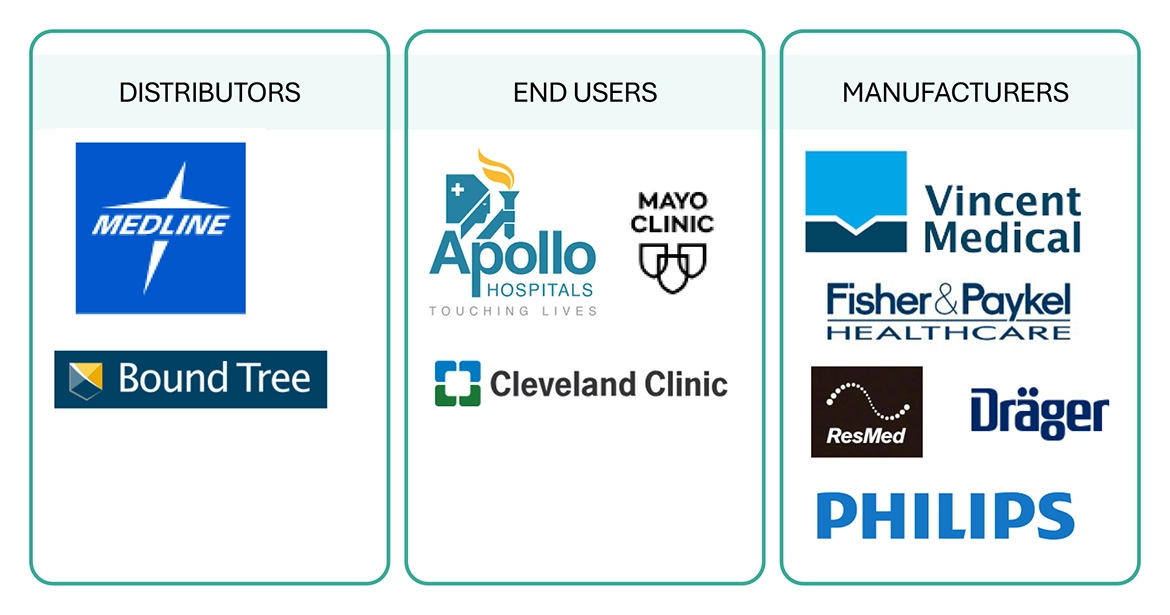The global medical humidifier market is experiencing significant growth, driven by the increasing prevalence of respiratory diseases and advancements in healthcare infrastructure. Valued at approximately USD 922.8 million in 2024, the market is projected to reach USD 1,211.7 million by 2029, reflecting a compound annual growth rate (CAGR) of 5.6%.

Key Drivers of Market Growth
Several factors contribute to the expansion of the medical humidifier market:
- Rising Incidence of Respiratory Diseases: Conditions such as chronic obstructive pulmonary disease (COPD), asthma, pneumonia, and lung infections are on the rise globally, necessitating effective respiratory therapies. Medical humidifiers play a crucial role in providing humidified oxygen therapy, enhancing patient comfort and treatment outcomes.
- Advancements in Neonatal Care: The increasing rates of preterm births and neonatal respiratory issues have led to a heightened demand for specialized neonatal care equipment, including medical humidifiers. These devices are essential in neonatal intensive care units (NICUs) to support the delicate respiratory systems of premature infants.
- Shift Towards Home Healthcare: Rising healthcare costs and patient preference for home-based care have accelerated the adoption of medical humidifiers in home settings. This trend is particularly evident among the aging population, who require long-term respiratory support.
- Government Investments in Healthcare Infrastructure: Emerging markets are witnessing substantial investments in hospital infrastructure, leading to increased demand for advanced medical equipment, including humidification devices. These investments aim to enhance ICU capacity and overall healthcare delivery.
Emerging Trends in the Medical Humidifier Market
The market is characterized by several notable trends:
- Technological Innovations: The development of advanced humidification technologies, such as heated humidifiers and heat and moisture exchangers (HMEs), has improved the efficiency and effectiveness of respiratory therapies.
- Integration of Disposable Components: To minimize the risk of infections and ensure patient safety, there is a growing adoption of disposable components in medical humidifiers. However, this also leads to increased operational costs due to the need for frequent replacements.
- Focus on Infection Control: Proper maintenance and hygiene of medical humidifiers are critical to prevent ventilator-associated pneumonia (VAP) and other respiratory infections. Healthcare facilities are emphasizing stringent infection control protocols to mitigate these risks.
- Opportunities for Industry Stakeholders
Stakeholders in the medical humidifier market can explore several avenues for growth:
- Expansion in Emerging Markets: Developing regions, particularly in the Asia Pacific, present significant growth opportunities due to rising healthcare investments, increasing birth rates, and a growing aging population.
- Product Innovation: Investing in research and development to create more efficient, user-friendly, and cost-effective humidification devices can provide a competitive edge in the market.
- Strategic Partnerships: Collaborations between medical device manufacturers, healthcare institutions, and government bodies can facilitate the development and adoption of advanced respiratory care solutions.
Conclusion
The medical humidifier market is poised for steady growth, driven by the increasing prevalence of respiratory diseases, advancements in neonatal care, and a shift towards home healthcare. By focusing on technological innovations, expanding into emerging markets, and fostering strategic partnerships, industry stakeholders can capitalize on the numerous opportunities this evolving market presents.
